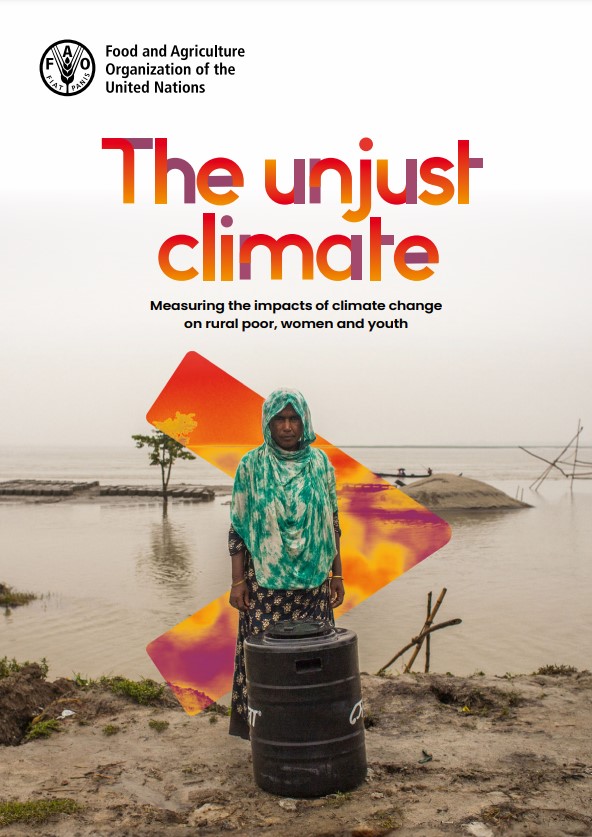
목차
Contents
FOREWORD viii
ACKNOWLEDGEMENTS x
ABBREVIATIONS xi
EXECUTIVE SUMMARY xiii
PART I. CLIMATE VULNERABILITY IN RURAL AREAS: EVIDENCE ON THE ROLE OF WEALTH,
GENDER AND AGE 1
1. INTRODUCTION 3
2. CONCEPTUAL FRAMEWORK: UNDERSTANDING HOW CLIMATE CHANGE AFFECTS RURAL PEOPLE 7
What is climate vulnerability? 9
3. WEALTH-RELATED DISPARITIES IN CLIMATE VULNERABILITY 15
Extreme weather events cause considerable income losses for the rural poor 17
Extreme weather events push poor rural households to adopt maladaptive coping strategies 18
Poor rural households become more reliant on agriculture as long-term temperatures increase 19
4. GENDER DISPARITIES IN CLIMATE VULNERABILITY 23
Extreme weather events reduce the incomes of female-headed households significantly more than those of male-headed households 25
Female-headed households cope with extreme weather events in various ways 27
Female plot managers are as capable as male plot managers to adopt adaptive agricultural practices, but lose more as a result of extreme weather events 27
Women take on an additional work burden compared to men when extreme weather events occur 29
Long-term increases in temperature affect the farm and total incomes of female-headed
households more than those of male-headed households 30
Long-term exposure to temperature rises affects plots managed by men and women in the same manner, notwithstanding differences in adaptive strategies 32
5. AGE-RELATED DISPARITIES IN CLIMATE VULNERABILITY 35
Young households leverage off-farm income sources to overcome extreme weather events 36
Young households take advantage of extreme weather events to acquire livestock 38
Extreme weather events alter employment opportunities and labour allocations for different age groups 38
Long-term temperature rises push young households to diversify their incomes 39
6. PRIORITIES AND RECOMMENDATIONS FOR INCLUSIVE CLIMATE POLICIES 43
More attention and funding for vulnerable rural people 43
Policy priorities for inclusive climate actions that address the needs of rural people 45
Promoting the adoption of inclusive adaptive actions in farm systems 45
Leveraging social protection programmes 46
Tailoring extension services to the needs of vulnerable people 47
Integrating gender-transformative methodologies 47
Enabling inclusive off-farm opportunities 47
Building evidence on inclusive climate adaptation actions 49
Moving forward 49
PART II. UNDERSTANDING THE DATA, VARIABLES AND METHODS 51
7. UNDERSTANDING THE DATA SOURCES 53
Main household-level analysis 53
Deep-dive analysis into individual labour outcomes 53
Deep-dive analysis at the level of farm plots 54
Climate data 54
Spatial control data 55
8. WHAT IS MEASURED AND HOW IS IT MEASURED IN THIS REPORT? 57
Vulnerable groups 57
Measuring sensitivity to climate shocks 59
Measuring adaptation 60
Measuring climate stressors 62
Matching climate data to surveys in space and time 64
9. THE EMPIRICAL STRATEGY: ESTIMATING THE EFFECTS OF CLIMATE STRESSORS ON SENSITIVITY AND ADAPTATION 67
10. EXPLORING THE CONTEXT: A DESCRIPTIVE ANALYSIS OF THE DATA 71
Mapping exposure to climate stressors 71
Socioeconomic characteristics and differences based on wealth, gender and age 76
REFERENCES 80
GLOSSARY 90
해시태그
관련자료
AI 100자 요약·번역서비스
인공지능이 자동으로 요약·번역한 내용입니다.
The unjust climate : Measuring the impacts of climate change on rural poor, women and youth
(불공정한 기후 : 기후변화가 농촌 빈곤층, 여성, 청소년에게 미치는 영향 측정)



